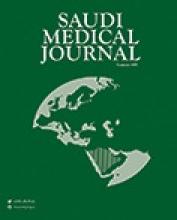Abstract
OBJECTIVE: To elucidate the expression of epoxygenases belonging to cytochrome P-450 mono-oxygenases (CYP2) family in rat ischemic myocardium at varying reperfusion periods, and the effect of epoxygenase inhibition on the post-ischemic heart.
METHODS: The current study was conducted in the Department of Pharmacology, Medical College of Wuhan University, China, between September 2004 and June 2005. Rats were subjected to 40 minutes of myocardial ischemia, followed by 0, 15, 60, and 180 minutes of reperfusion. Superoxide generation was assayed by confocal microscopy, CYP2B1/2, 2C6, 2E1, 2J3 gene expressions were determined by reverse transcriptase polymerase chain reaction. Fourteen, 15-dihydroxyeicosatrienoic acid (DHET) concentration was measured by enzyme-linked immunosorbent assay. The effects of the CYP epoxygenase inhibitor N-methylsulphonyl-6-(2-propargyloxyphenyl) hexanamide (MS-PPOH) on myocardial damage and superoxide generation caused by 60 minutes of reperfusion were also evaluated.
RESULTS: During myocardial ischemia/reperfusion, CYP2C6 and 2J3 mRNA expression were up-regulated with the peak level at 15 minutes of reperfusion; CYP2E1 gene expression decreased in a time dependent manner and reached the minimum level at 180 minutes of post-ischemia. Meanwhile, no obvious variations of CYP2B1/2 gene expression were detected during different reperfusion periods. Fourteen, 15-DHET significantly increased during reperfusion in ischemic hearts. The MS-PPOH pretreatment (15 mg/kg) effectively reduced myocardial damage and superoxide production.
CONCLUSION: There are changes in gene expression of individual isozymes and an elevation of CYP epoxygenase activity involved in myocardial reperfusion injury in vivo. Epoxygenase inhibition plays a protective role in cardiac post-ischemic damage.
- Copyright: © Saudi Medical Journal
This is an open-access article distributed under the terms of the Creative Commons Attribution-Noncommercial-Share Alike 3.0 Unported, which permits unrestricted use, distribution, and reproduction in any medium, provided the original work is properly cited.






